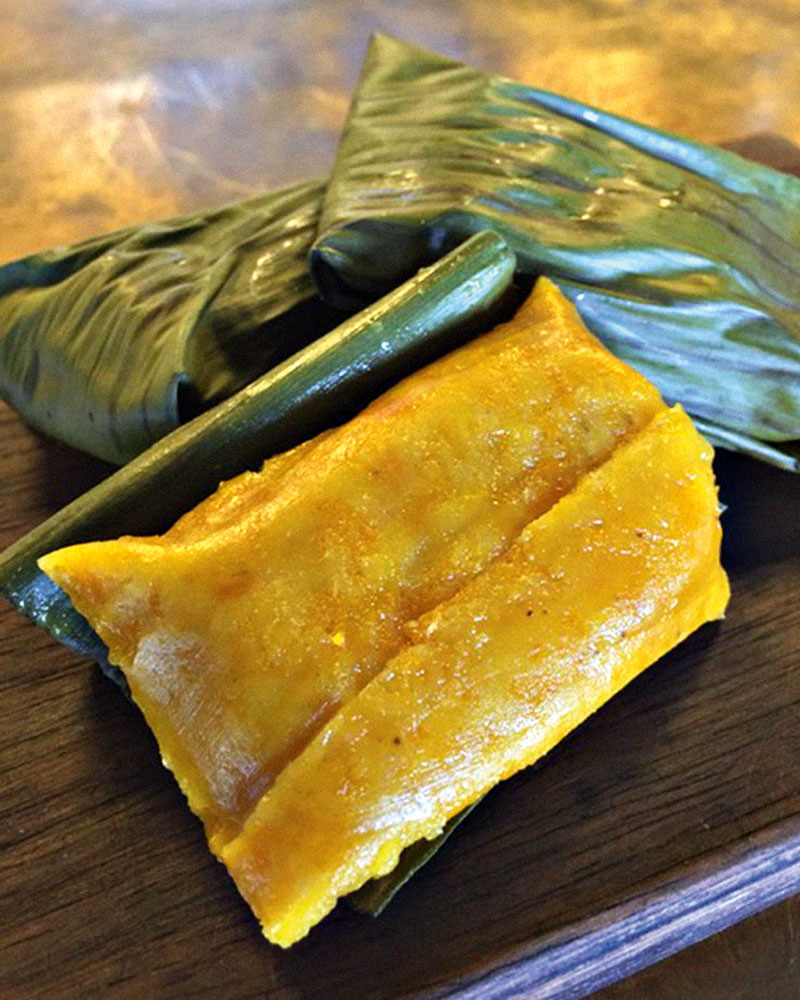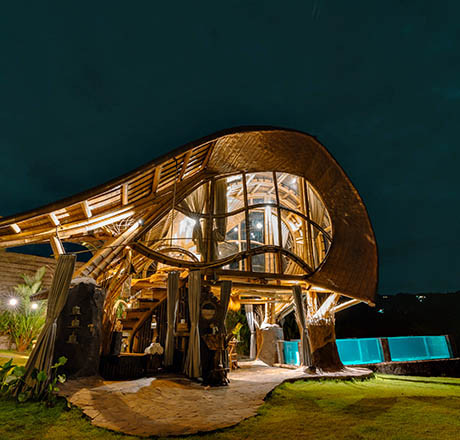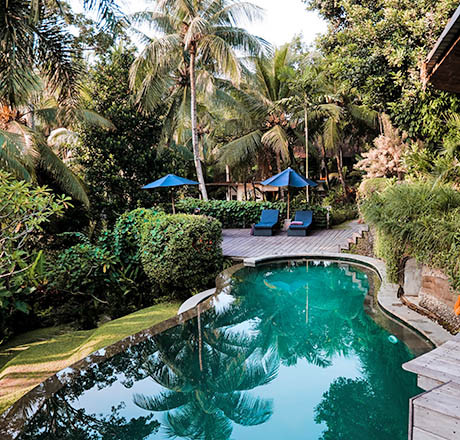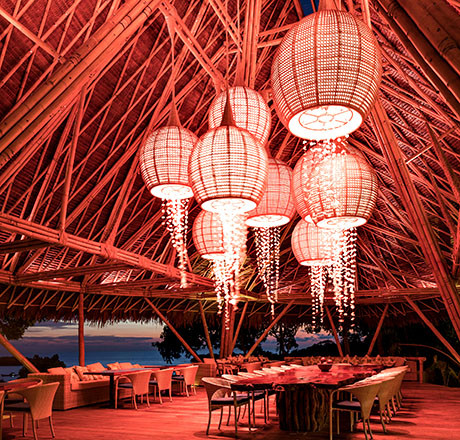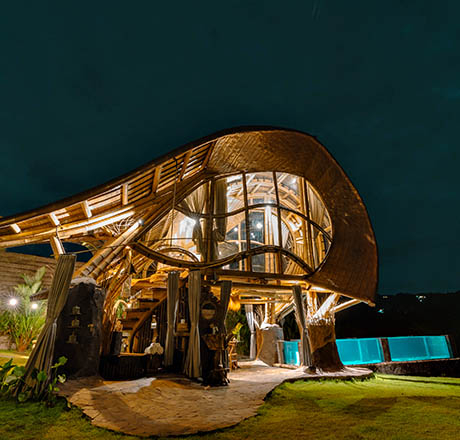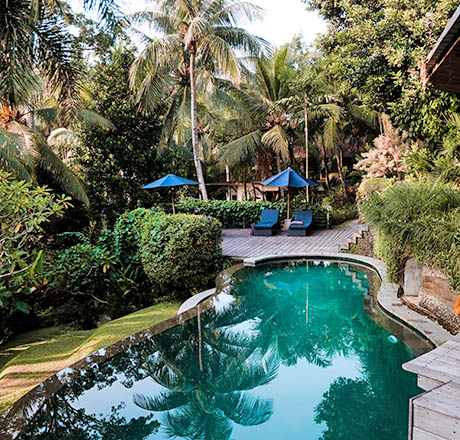Indonesia
Indonesia
Inside Bali’s Belly
A couple of tables over, a female patron catches my eye. “Make sure you visit the loo while you’re here,” she whispers across to me.
I’m sure I’ve misheard her. “I’m sorry, what?”
“Trust me, you’ll want to make a visit,” she insists.
I laugh nervously. This is not what I want to hear. After more than an hour travelling down winding roads to get here and the warnings from previous Bali-goers about the region’s unforgiving Bali belly still ringing in my ears, my enthusiasm for diving face first into local Balinese cuisine wanes somewhat. Trying not to let any assumptions cloud my judgement, I give the woman a nod, my teeth clamped together in a strained smile.
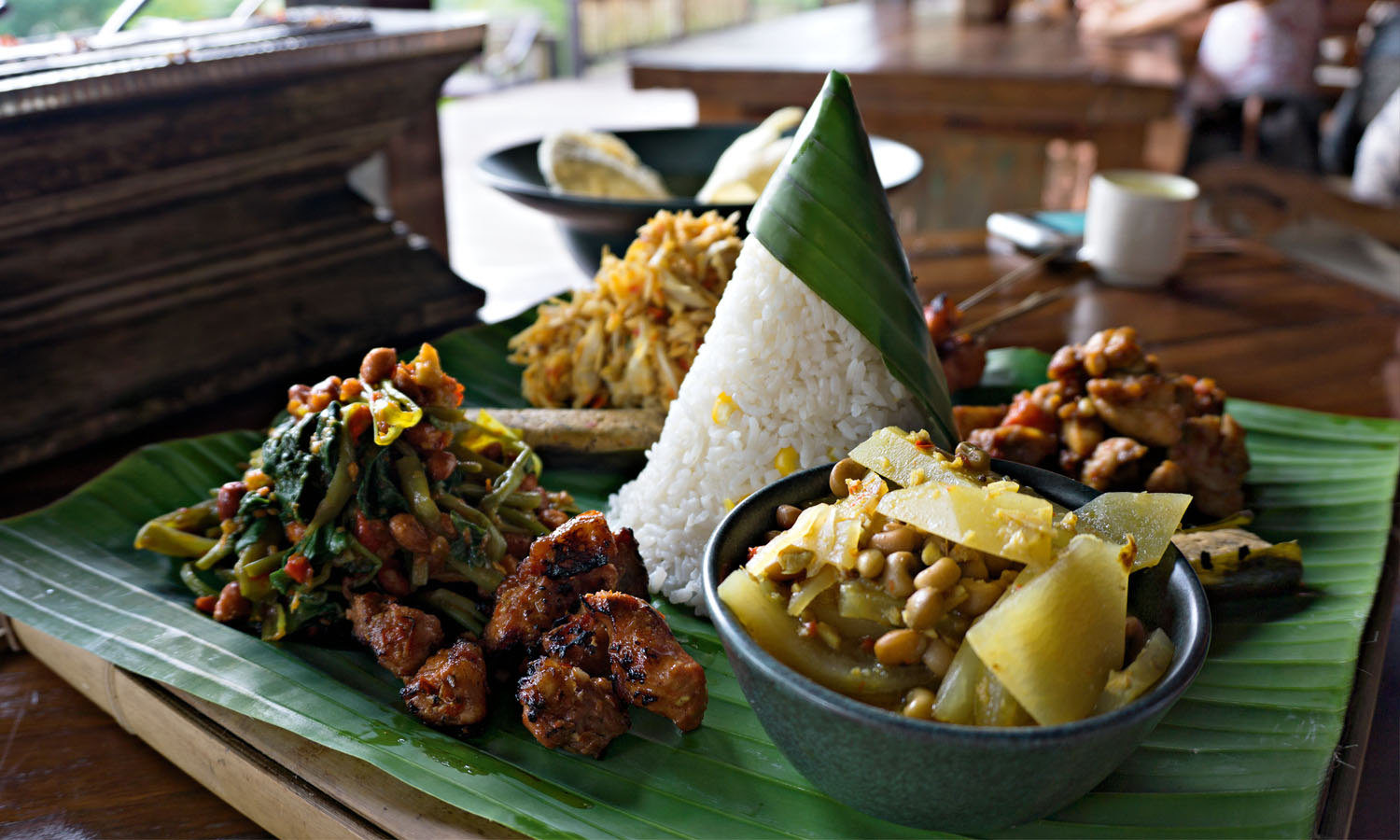

Thankfully, the views make it easy to push these unwelcome thoughts to the back of my mind. Prior to its havoc-inducing eruption in late 2017, Mount Agung stands tall and stoic in the distance, just visible beyond the low cloud cover that is slowly blanketing the sunny skies. It’s not difficult to see why owner and Executive Chef Penelope Williams chose this spot to build her restaurant, Bali Asli.
“I quickly discovered that Balinese cuisine and culture was very difficult for people with a limited amount of time to really discover properly,” she says. “It’s all a bit adulterated or out of context and people go home thinking that Balinese food is nasi goreng, mi goreng and chicken satay with peanut sauce. It’s not. So I decided to create a place that did culinary adventures and offered people the opportunity to feel how I did when I first came here.”
Penelope’s passion and enthusiasm for her craft is both evident and infectious. Originally from Sydney, her resume includes some of the top restaurants around the globe. She trained at the esteemed Savoy in London, worked as a sous chef at Bathers Pavilion in Sydney and was the Executive Chef at Alila Manghis in Ubud’s Candidasa region. Her restaurant, located in Karangasem, about a two-hour drive from the bedlam of Kuta, is the manifestation of her desire to go back to the roots of Balinese cuisine and craft something traditional, with a new twist.
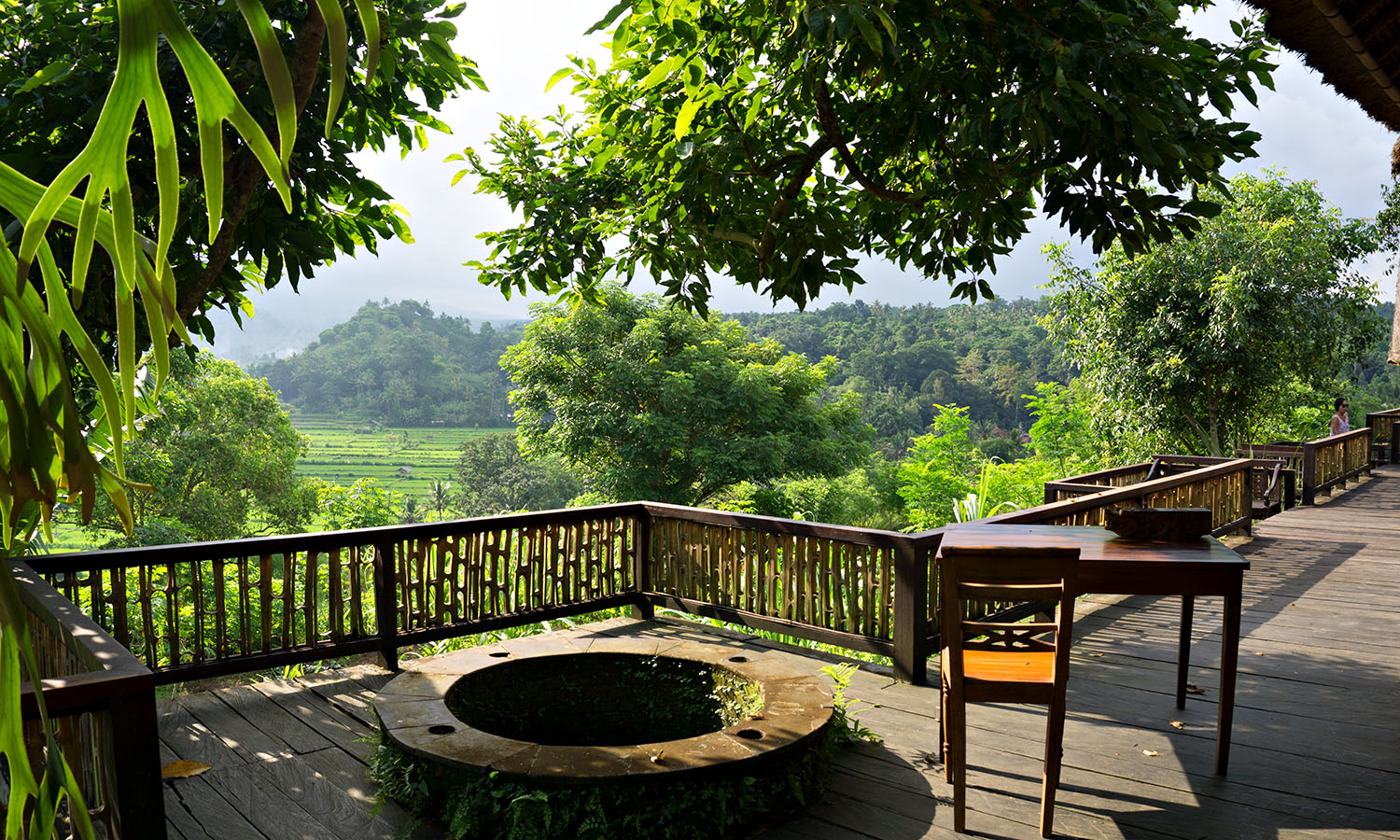

This idea also inspired the name of her restaurant. Asli means original, or created in a traditional way using original ingredients.
“Balinese food is really regional,” she says as we sip our salaks. “No one travels – it’s just what’s there.” The menu changes almost daily according to what’s available from the village markets and everything is cooked and prepared on-site, from roasted coffee beans to honey. The venue itself is a work of art that only enhances the experience; its high thatched roof, recycled teak furniture and open-air deck overlooking the rice fields all capture the slow-moving serenity that many believe was sucked out of Bali long ago.
When it comes to choosing a meal that encapsulates the traditional cuisine of East Bali, Penelope recommends the megibung. The name means many people that sit and eat together from one large plate while discussing life. Similar to a tasting plate, it features six small dishes and is shared between three to four people. It’s also unique to the Karangasem area and can only be found in East Bali. The story goes that in 1692, the King of Karangasem, I Gusti Anglurah Ketut Karangasem, conquered what is now known as Lombok. He then withdrew his soldiers and invited Lombok’s dignitaries to sit and share a meal with him, together as equals, and announced the end of the war. It is a practice that is enjoyed to this day both in the home and at traditional events such as at weddings, festivals and cremations.
We start off with jukut kelor meliklik, a sweet corn broth infused with bayam (amaranth leaves) and garnished with fried shallot. Fragrant curlicues weave into the air as I look at the steaming bowl with trepidation, my thoughts back on the patron’s earlier comment. “It’s a broth,” I reason, “how bad could it be?” It’s wonderful.


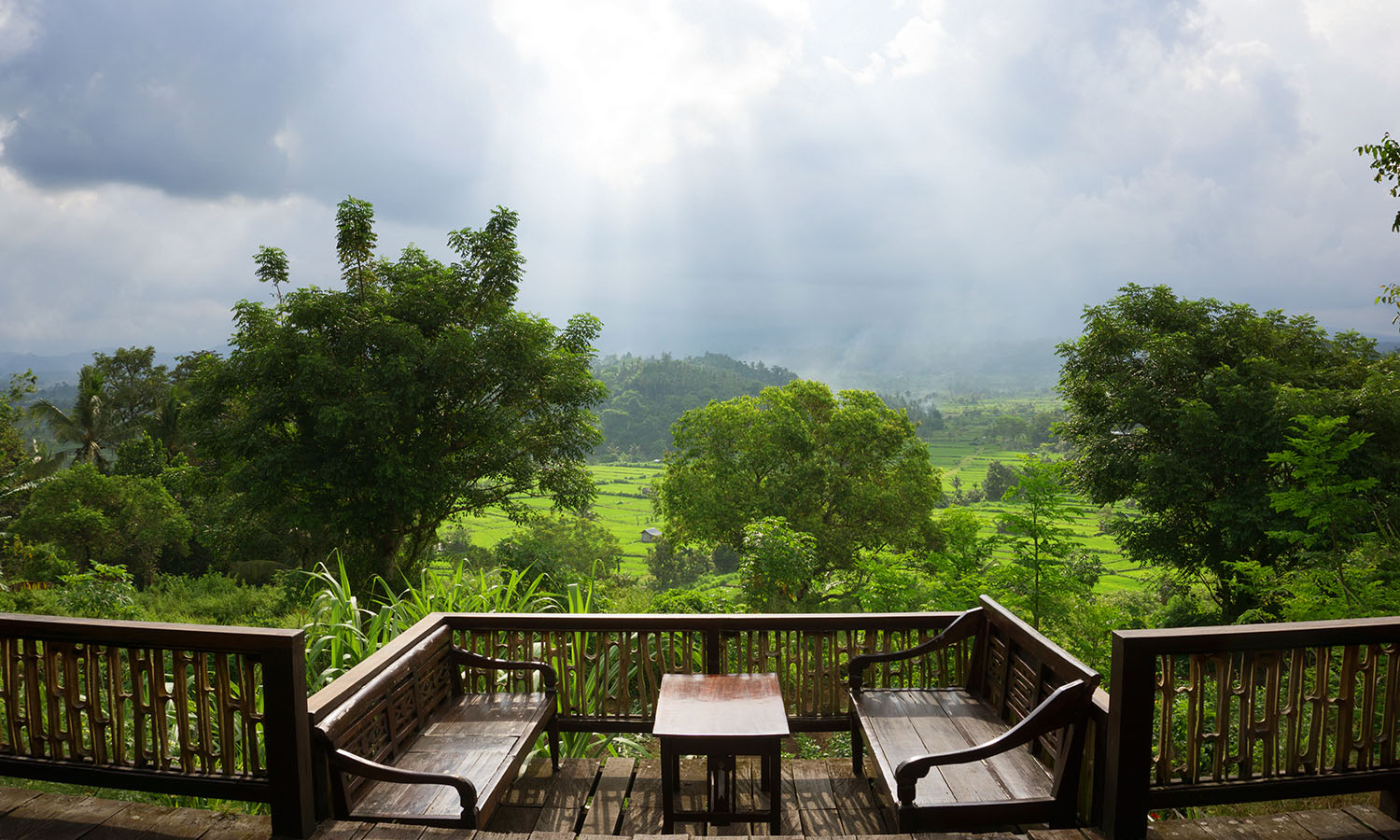

Next is the megibung. The platter is a juxtaposition of casual refinery and miniature architecture – each vibrant dish has its own place, the rice cone forming a beacon-like centrepiece all presented on a banana leaf cut straight from the tree in the field below. I exemplify traits similar to that of a highchair-bound toddler that has spied something tasty and just out of reach as Penelope explains each morsel.
There’s besaip bumbu manis, chicken marinated in turmeric, garlic, chilli and braised in a sweet chili soy sauce, and pesan telingis, a rolled and grilled banana leaf filled with poached and shredded mackerel fish mixed with coconut curd. Plant-based dishes include urab nangke, a jackfruit salad tossed with finely grated coconut and pelecing kangkung, a shredded water spinach with fried peanuts and chunky tomato salsa. Rounding out the platter is jukut gadang kacang barak, a poached papaya with red beans and nasi jagung, a traditional fried rice with sweet corn.
This time, I don’t hesitate. Penelope encourages me to scoop up the food with my hands straight from the serving dish as is the traditional way. “It tastes nicer when it’s squished together; when it’s on a fork it just kind of all falls off,” she warns. My gluttonous inner-toddler rejoices.
Throughout the meal, Penelope shares tales of her culinary and cultural adventures, from fossicking for fresh sea urchins and snails in Uluwatu and picking herbs like moringa (said to be the next big superfood), to partaking in reincarnation ceremonies. Her self-ascribed ‘crazy adventures’ have inspired her to create foodie and cultural experiences, too, such as a cooking school plus hiking, cycling, vespa and street food tours.
As dessert is served – dragon fruit and Balinese coffee – I’m feeling good. Really good, in fact. Happily stuffed and no signs of an impending bowel breach.
“Loved the bathroom!” says a male patron as he walks past.
“Did you take a photo?” asks Penelope. Um. What?
“We’ve got an album on our Facebook page for toilet selfies,” she giggles.
Curiosity truly piqued, I decide to visit the bathroom, camera in hand, idly wondering if this is a photograph I’d rather not grace my SD card. I give the door a push. Bright, natural light bathes the room. Burgundy wallpaper dotted with round rustic mirrors covers either side, before opening out to a wall of towering banana leaf trees. I start laughing. The place where I feared I’d be spilling my guts is actually a magnificent outdoor bathroom. It’s just another of Penelope’s crazy adventures in a bid to immerse visitors in the local culture, with a fun twist, of course. It turns out I’ve got the best kind of Bali belly – a happy one.
Sumping Tabu Recipe
Serves 4
INGREDIENTS
250g pumpkin, peeled and finely grated
50g rice flour
50g wheat flour
25g tapioca flour
80g white sugar
½ cup fresh, grated coconut
A pinch of salt
1 metre of banana leaf
Method
1. Combine the grated pumpkin with the salt, sugar, coconut and all the flours to make a soft paste. The taste shouldn’t be too sweet and the salt shouldn’t be overpowering, just enough to enhance the flavours.
2. Cut the banana leaf into 10cm x 12cm rectangles. You will need two rectangles for each parcel.
3. Place a tablespoon of the paste into the centre of the leaf, folding the long edges of the banana leaf together to keep its rectangular shape, before bending the open ends over to close the parcel.
4. Steam for 15 minutes until the mixture has thickened. Cool to room temperature, then serve.
Words Samantha Kodila
Photos Samantha Kodila
Tags: bali, food, indonesia, southeast asia
 (
(



